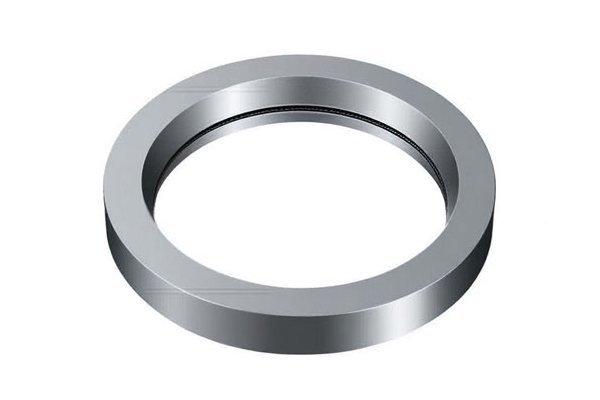Did you know that temperature fluctuations can significantly impact the precision of machined parts? In the world of CNC machining, even the slightest temperature changes can result in dimensional inaccuracies due to the expansion and contraction of materials. This phenomenon, known as the thermal expansion coefficient, is critical to consider when aiming for the highest level of precision in manufacturing. Understanding how to control the expansion coefficient and enhance precision can elevate product quality and process efficiency to unprecedented levels.
In this blog, we will delve into what expansion coefficients are, how they affect CNC machining, and explore effective strategies and techniques to control them while maintaining precision. By the end of this guide, you will be equipped with a holistic understanding of these concepts, along with practical solutions that can be implemented in your CNC machining processes.
Understanding Expansion Coefficient
Definition and Relevance
The expansion coefficient, or the coefficient of thermal expansion (CTE), measures how much a material expands or contracts with changes in temperature. Each material has a unique CTE, which is expressed in units of length change per degree change in temperature (e.g., mm/m/°C). For CNC machining, understanding the CTE of the materials being processed is vital because larger differences can lead to warping, misalignment, and inaccuracies in the final product.
Why It Matters in CNC Machining
In CNC machining, precision is paramount. Variations in dimensions of just a few microns can be detrimental, especially in applications such as aerospace, automotive, and medical industries. Managing the thermal expansion of materials during the machining process is essential for achieving tight tolerances and ensuring repeatability across production runs.
Key Factors Influencing Expansion Coefficient
Techniques for Controlling Expansion and Enhancing Precision
Implementing effective techniques to control expansion and maintain precision is crucial for CNC machining success. Here are several strategies:
Decide the Right Material:
Understanding the properties of the materials you are working with is the first step. Select materials with low thermal expansion coefficients when precision is crucial. For example, choose titanium or certain grades of stainless steel for applications requiring minimal dimensional change under temperature fluctuations.
Use Advanced Materials:
Explore the use of composite materials or materials specifically designed for CNC machining. These materials can have optimized thermal properties leading to improved precision.
Temperature Monitoring:

Implement temperature monitoring systems to track the heat generated during machining. Real-time data can help operators make immediate adjustments to processes.
Controlled Environment:
CNC machining should take place in temperature-controlled environments. Use heat sinks, fans, or coolants to manage temperature during operations.
Cooling Techniques:
Use effective cooling strategies such as high-pressure coolant systems to reduce thermal buildup during machining processes. This not only controls the temperature but also can improve tool life and surface finish.
Material and Coating:
Select cutting tools made from materials with high thermal stability. Applying coatings that improve thermal dissipation and wear resistance can also aid in controlling heat buildup.
Optimized Cutting Parameters:
Adjust cutting parameters such as speed, feed rate, and depth of cut to minimize heat generation. Slower speeds with high feed rates can often yield effective results in reducing thermal expansion.
Cryogenic Machining:
This involves the use of cryogenic gases to cool the tools and workpieces during machining. Cryogenic conditions significantly reduce the thermal expansion of the material, thus achieving tighter tolerances.
Adaptive Machining:
Utilize adaptive control systems that can make adjustments in real-time based on temperature sensors and feedback. These systems dynamically adjust machining parameters to counteract thermal expansion effects.
Aging Processes:
Introduce post-machining heat treatment processes, such as aging, to stabilize the dimensions of machined parts. This can correct dimensional inaccuracies caused by temperature fluctuations.
Inspection and Calibration:
Regularly inspect and calibrate CNC machines and tools to ensure they maintain their precision over time. Implementing metrology checks during production can catch issues early.
Controlling the expansion coefficient and maintaining precision in CNC machining is a multi-faceted process that demands careful consideration of various factors, including material properties, machining environment, tooling choices, and post-machining strategies.
By understanding these elements and employing the suggested techniques, manufacturers can significantly enhance the quality and precision of their machined components, thus driving innovation and continuous improvement in their processes.
Ultimately, the ability to manage thermal expansion plays a critical role in achieving success in CNC machining, especially in precision-demanding industries. It is a topic worth focusing on for any manufacturer looking to thrive in today’s competitive landscape.
Taking this knowledge to heart can not only improve product quality but can also lead to cost savings, improved efficiency, and increased customer satisfaction. The journey to CNC machining precision starts with a comprehensive understanding of thermal expansion—so, let’s embrace this crucial aspect for our machining excellence!






